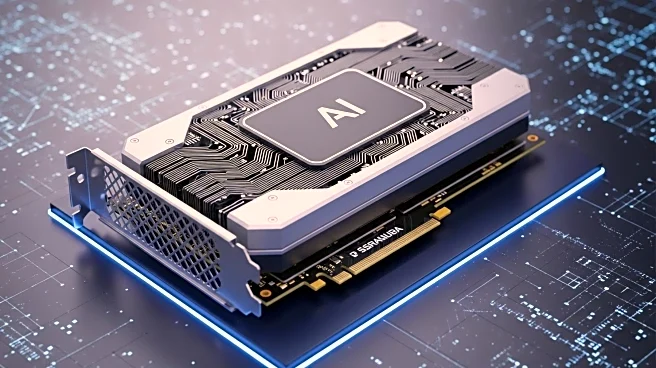What's Happening?
Intel has announced its new enterprise GPU, Crescent Island, designed for AI inference optimization. The GPU is built on the next-gen Xe3P Celestial micro-architecture and features 160GB of LPDDR5x memory, aimed at enhancing performance-per-Watt efficiency.
The announcement was made during the OCP Global Summit, where Intel also introduced Gaudi 3 rack-scale reference designs. Crescent Island is expected to be available for customer sampling in the second half of 2026, with broader availability likely in 2027. This new GPU is positioned to compete with AMD's Instinct MI450 series and NVIDIA's Vera Rubin.
Why It's Important?
The introduction of Crescent Island marks Intel's strategic move to strengthen its position in the AI market, particularly in inference optimization. This development is crucial as AI continues to drive demand for high-performance computing solutions. By focusing on power efficiency and cost optimization, Intel aims to attract enterprise customers looking for scalable AI solutions. The competition with AMD and NVIDIA highlights the growing importance of AI in the tech industry, with companies vying for leadership in this rapidly evolving field.
What's Next?
Intel plans to begin customer sampling of Crescent Island in the latter half of 2026, with potential full-scale production in 2027. The company is also working on refining its open-source software stack to support the new GPU. As Intel continues to develop its AI capabilities, industry stakeholders will be watching closely to see how Crescent Island performs against competing products from AMD and NVIDIA.
Beyond the Headlines
Intel's announcement of Crescent Island also underscores the company's commitment to open-source hardware enablement, which could lead to broader adoption and innovation in AI technologies. The focus on performance-per-Watt efficiency reflects a growing trend towards sustainable computing solutions, which could have long-term implications for energy consumption in data centers.














